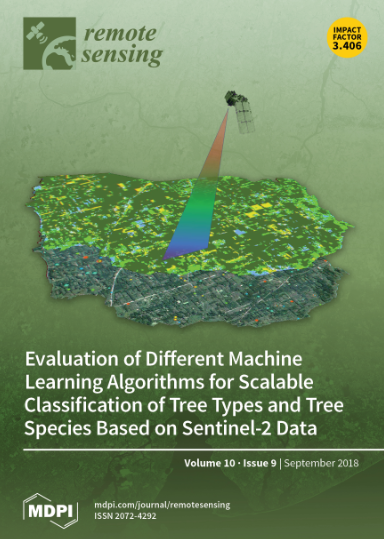Automatic Water Body Extraction from SAR Images Based on MADF-Net
IF 4.2
2区 地球科学
Q2 ENVIRONMENTAL SCIENCES
引用次数: 0
Abstract
Water extraction from synthetic aperture radar (SAR) images has an important application value in wetland monitoring, flood monitoring, etc. However, it still faces the problems of low generalization, weak extraction ability of detailed information, and weak suppression of background noises. Therefore, a new framework, Multi-scale Attention Detailed Feature fusion Network (MADF-Net), is proposed in this paper. It comprises an encoder and a decoder. In the encoder, ResNet101 is used as a solid backbone network to capture four feature levels at different depths, and then the proposed Deep Pyramid Pool (DAPP) module is used to perform multi-scale pooling operations, which ensure that key water features can be captured even in complex backgrounds. In the decoder, a Channel Spatial Attention Module (CSAM) is proposed, which focuses on feature areas that are critical for the identification of water edges by fusing attention weights in channel and spatial dimensions. Finally, the high-level semantic information is effectively fused with the low-level edge features to achieve the final water detection results. In the experiment, Sentinel-1 SAR images of three scenes with different characteristics and scales of water body are used. The PA and IoU of water extraction by MADF-Net can reach 92.77% and 89.03%, respectively, which obviously outperform several other networks. MADF-Net carries out water extraction with high precision from SAR images with different backgrounds, which could also be used for the segmentation and classification of other tasks from SAR images.基于 MADF-Net 的合成孔径雷达图像水体自动提取技术
从合成孔径雷达(SAR)图像中提取水信息在湿地监测、洪水监测等方面具有重要的应用价值。然而,它仍然面临着泛化程度低、细节信息提取能力弱、背景噪声抑制能力弱等问题。因此,本文提出了一种新的框架--多尺度注意力细节特征融合网络(MADF-Net)。它由编码器和解码器组成。在编码器中,使用 ResNet101 作为坚实的骨干网络,捕捉不同深度的四个特征层,然后使用提出的深金字塔池(DAPP)模块执行多尺度池化操作,确保即使在复杂背景下也能捕捉到关键的水体特征。在解码器中,提出了通道空间关注模块(CSAM),通过融合通道和空间维度的关注权重,重点关注对识别水边至关重要的特征区域。最后,将高层语义信息与低层边缘特征有效融合,以实现最终的水域检测结果。实验中使用了三幅具有不同水体特征和尺度的 Sentinel-1 SAR 图像。MADF-Net 对水体提取的 PA 和 IoU 分别达到 92.77% 和 89.03%,明显优于其他几个网络。MADF-Net 可以从不同背景的合成孔径雷达图像中高精度地提取水体,也可用于合成孔径雷达图像中其他任务的分割和分类。
本文章由计算机程序翻译,如有差异,请以英文原文为准。
求助全文
约1分钟内获得全文
求助全文
来源期刊

Remote Sensing
REMOTE SENSING-
CiteScore
8.30
自引率
24.00%
发文量
5435
审稿时长
20.66 days
期刊介绍:
Remote Sensing (ISSN 2072-4292) publishes regular research papers, reviews, letters and communications covering all aspects of the remote sensing process, from instrument design and signal processing to the retrieval of geophysical parameters and their application in geosciences. Our aim is to encourage scientists to publish experimental, theoretical and computational results in as much detail as possible so that results can be easily reproduced. There is no restriction on the length of the papers. The full experimental details must be provided so that the results can be reproduced.
 求助内容:
求助内容: 应助结果提醒方式:
应助结果提醒方式:


